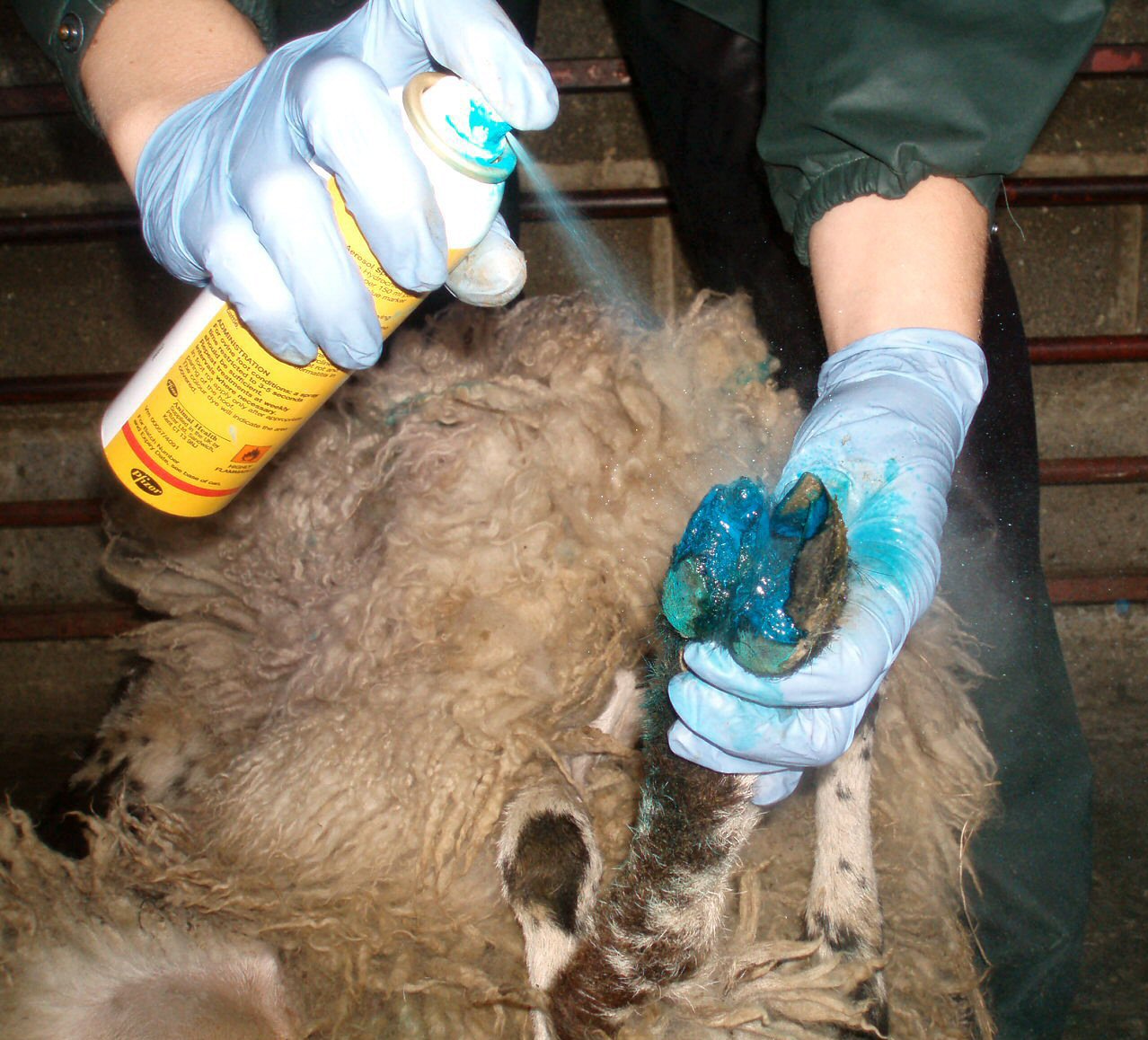- Home
- Knowledge library
- Lameness in sheep: the five-point plan – treatment
Lameness in sheep: the five-point plan – treatment
Find out how and when to treat infected sheep to reduce lameness.
Treating quickly to reduce disease

Disease spreads quickly, so treat even mildly lame sheep as soon as possible. Rapid treatment helps to stop the cycle of infection.
- Catch – within three days of becoming lame
- Inspect – clean away dirt but do not trim hoof horn
- Diagnose – identify correct cause. Seek advice from your vet if not sure
- Treat – see decision tree for treatment options
- Mark – affected limb and record tag number
- Cull – repeat offenders or run lame sheep in a separate group
Look for all cases of lameness, not just the worst cases, and act quickly to treat.
When treating animals, ensure the right antibiotic is given for the disease and the correct dose. Discuss this with the vet.
Antibiotic injections
The correct dose of long-acting antibiotic is the most efficient treatment for scald in adults, footrot, CODD and toe abscesses.
Typically, long-acting intramuscular oxytetracycline or amoxicillin can be used against footrot.
- For CODD, long-acting intramuscular amoxicillin is advised
- For most oxytetracycline-based products, no more than 5 ml should be given at any one site
- These injections can provide cure rates of 70–90%, so some sheep will require repeat injections
Give the correct dose, route and length of treatment
Failure to strictly follow this will severely affect an animal’s chances of recovery and may cause antibiotic resistance on your farm.
Do not underdose an animal – always give the correct dose for their weight. If these products are not effective, There could be several reasons if these products are not effective. For this
contact your the vet for further advice.
Foot sprays
An oxytetracycline-based aerosol will aid treatment by killing surface bacteria. This will also reduce the spread of footrot to other sheep in the flock.
Spray all four feet because there will be increased numbers of bacteria on the healthy feet as well as the diseased feet.

Top tips
- Make sure the area to be sprayed is clean
- Spray for at least five seconds, or until lesion is adequately covered
- Let the sprayed area dry before releasing the sheep
- Where possible, allow treated sheep to stand on dry ground for a minimum of 30 minutes before returning to pasture
Foot trimming
Do not trim sound feet; horn will break away naturally. Do not trim for cosmetic reasons.
Trimming is only required to remove pockets of horn when the length of the horn causes sheep to be unable to walk. Ewes that are grazed at pasture for most of the year will naturally wear the horn away.
If trimming is required:
- Leave a wall edge 2–3mm proud of the sole
- Only trim away loose horn that may allow mud to become impacted on the foot
- Do not trim to blood
- Collect and dispose of trimmed hoof
- Disinfect clippers and clean hands between feet – use sharp instruments and replace them regularly
- Before disinfection, clean hands and foot-trimmers in soapy water to remove visible dirt
Research has shown that disinfecting blades in 1% FAM30®, 2% Virkon® or 2% sodium hypochlorite for 20 seconds is effective. For more information, see the hygiene and disinfection protocol Reducing the spread of digital dermatitis by disinfection of hoof trimming equipment.
Foot-baths
Foot-bathing can help to treat and prevent scald in lambs but is not effective for treating footrot or CODD. Always foot-bathe sheep after routine gathering to prevent the spread of disease.
It is important to:
- Plan foot-bathing
- Check equipment is in good order and the sheep’s feet are clean
- Use solutions at concentrations and stand-in time recommended by the manufacturers
- Stand sheep on a clean, dry and hard area for a minimum of 30 minutes after foot-bathing
- Turn sheep onto a clean, dry field (one that has ideally been sheep-free for at least two weeks) afterwards

